Journal Description
Surfaces
Surfaces
is an international, peer-reviewed, open access journal on all aspects of surface and interface science published quarterly online by MDPI.
- Open Access— free for readers, with article processing charges (APC) paid by authors or their institutions.
- High Visibility: indexed within ESCI (Web of Science), Scopus, Inspec, CAPlus / SciFinder, and other databases.
- Rapid Publication: manuscripts are peer-reviewed and a first decision is provided to authors approximately 15.7 days after submission; acceptance to publication is undertaken in 5.9 days (median values for papers published in this journal in the second half of 2023).
- Recognition of Reviewers: reviewers who provide timely, thorough peer-review reports receive vouchers entitling them to a discount on the APC of their next publication in any MDPI journal, in appreciation of the work done.
Impact Factor:
2.0 (2022);
5-Year Impact Factor:
2.5 (2022)
Latest Articles
Microcalorimetry Techniques for Studying Interactions at Solid–Liquid Interface: A Review
Surfaces 2024, 7(2), 265-282; https://doi.org/10.3390/surfaces7020018 - 23 Apr 2024
Abstract
►
Show Figures
Solid–liquid interfacial phenomena play an essential role in our everyday lives and are often regarded as the outcome of interactions at the solid–liquid interface. However, the intricately intrinsic mechanism underlying interfacial interactions renders in situ simulations and direct measurements challenging. As an effective
[...] Read more.
Solid–liquid interfacial phenomena play an essential role in our everyday lives and are often regarded as the outcome of interactions at the solid–liquid interface. However, the intricately intrinsic mechanism underlying interfacial interactions renders in situ simulations and direct measurements challenging. As an effective analytic method for studying solid–liquid interfacial interactions, microcalorimetry can provide the most basic thermodynamic information (including changes in enthalpy, entropy, and Gibbs free energy during solid–liquid binding/separation processes), which is extremely crucial for understanding interaction directionality and limitation. This review is dedicated to highlighting the pivotal role of microcalorimetry in studying solid–liquid immersion and adsorption processes. Specifically, we provide an overview of the commonly employed microcalorimetric methods, including differential scanning calorimetry (DSC), isothermal titration calorimetry (ITC), and immersion microcalorimetry (IM), and delve into the influence factors of enthalpy change, and finally discuss the specific applications of microcalorimetry in studying various solid–liquid binding processes. There remains a vast expanse of thermodynamic information regarding solid–liquid interactions that await exploration via calorimetry.
Full article
Open AccessArticle
Surface and Aggregation Properties of Rhamnolipids in Water–Bioethanol Mixtures: A Step toward Green Formulation Design
by
Rodolfo Esposito, Francesco Taddeo, Vincenzo Russo, Irene Russo Krauss and Gerardino D’Errico
Surfaces 2024, 7(2), 251-264; https://doi.org/10.3390/surfaces7020017 - 07 Apr 2024
Abstract
Water–ethanol mixtures are largely exploited for many different applications, from industrial processes to pharmaceutical formulations. Surfactants are often added to tune their interfacial properties. Sustainability concerns require redesigning such blends to minimize their environmental impact. A successful approach is to replace synthetic oil-based
[...] Read more.
Water–ethanol mixtures are largely exploited for many different applications, from industrial processes to pharmaceutical formulations. Surfactants are often added to tune their interfacial properties. Sustainability concerns require redesigning such blends to minimize their environmental impact. A successful approach is to replace synthetic oil-based components with affordable unpurified bio-derived alternatives. In this respect, we have characterized aqueous mixtures of bioethanol, obtained by the fermentation of algae, and rhamnolipids, biosurfactants of microbial origin. The physico-chemical characterization of water–bioethanol binary mixtures in terms of refractive index, density, viscosity, and surface tension indicates that bioethanol behaves like pure ethanol with negligible effects of impurities. Analysis of tensiometric titrations shows that, at bioethanol contents higher than 20–30% bioethanol mass percent, rhamnolipid aggregation is impaired, whereas surface adsorption at the water–air interface remains poorly affected. Overall, bio-derived components can be proposed as a promising alternative to oil-derived chemicals in eco-sustainable formulations.
Full article
(This article belongs to the Collection Featured Articles for Surfaces)
►▼
Show Figures
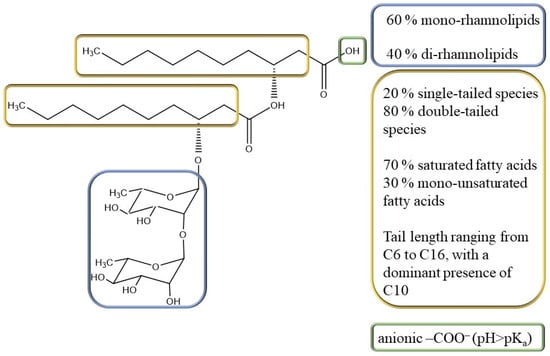
Figure 1
Open AccessArticle
Study on the Sound Absorption Properties of Recycled Polyester Nonwovens through Alkaline Treatment and Dimple Processing
by
Gyeong Cheol Yu, Jeong Jin Park, Eun Hye Kang, Sun Young Lee, Youl Huh and Seung Goo Lee
Surfaces 2024, 7(2), 238-250; https://doi.org/10.3390/surfaces7020016 - 02 Apr 2024
Abstract
This study focused on manufacturing efficient automobile sound-absorbing materials through alkaline treatment and dimple processing of recycled polyethylene terephthalate (rPET) nonwoven fabric. The rPET nonwoven fabric was produced with a sound-absorbing material through compression molding. It was improved through the development of porous
[...] Read more.
This study focused on manufacturing efficient automobile sound-absorbing materials through alkaline treatment and dimple processing of recycled polyethylene terephthalate (rPET) nonwoven fabric. The rPET nonwoven fabric was produced with a sound-absorbing material through compression molding. It was improved through the development of porous sound-absorbing materials through alkaline treatment and resonant sound-absorbing materials through dimple processing. As a result of morphological analysis, alkaline treatment showed that pore size and air permeability increased according to temperature and concentration increase conditions. On the other hand, dimple processing caused a decrease in air permeability and a decrease in pores due to yarn fusion, and as the dimple diameter increased, the sound-absorbing coefficient increased in the 5000 Hz band. Finally, it was judged that effective sound absorption performance would be improved through a simple process through alkaline treatment and dimple processing, and thus there would be applicability in various industrial fields.
Full article
(This article belongs to the Special Issue Surface Modification and Coating to Improve Properties of Various Materials)
►▼
Show Figures
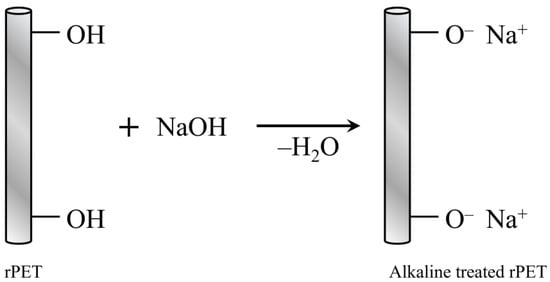
Figure 1
Open AccessArticle
A Route towards Durable Underwater Stable Superhydrophobic Surfaces: PET-Reinforced Candle Soot Layers
by
Xinghua Wu, Zhaokang Han, Yuchao Wang, Yutong Pan and Xiaohua Jie
Surfaces 2024, 7(2), 225-237; https://doi.org/10.3390/surfaces7020015 - 02 Apr 2024
Abstract
►▼
Show Figures
Superhydrophobic coating is widely used due to its waterproof and self-cleaning properties. Carbon soot (CS) nanoparticles are naturally superhydrophobic and non-toxic which are superior to other superhydrophobic coating. However, the weak binding force of the CS nanoparticle layers hinders their practical application. In
[...] Read more.
Superhydrophobic coating is widely used due to its waterproof and self-cleaning properties. Carbon soot (CS) nanoparticles are naturally superhydrophobic and non-toxic which are superior to other superhydrophobic coating. However, the weak binding force of the CS nanoparticle layers hinders their practical application. In this study, micro-nanostructured PET-CS superhydrophobic coatings were prepared by a simple method. The obtained coatings presented durable superhydrophobicity and underwater stability, which are superior to PDMS-CS coatings and CS layers. The coating surfaces demonstrated superhydrophobicity under a water pressure of 13.72 kPa for up to 16 days. The surface could withstand water flush for more than 15 min. The coatings also demonstrated good mechanical stability and maintained superhydrophobicity after an abrasion length of 8 m. The stable long-lasting underwater superhydrophobic surface is of great importance for marine applications.
Full article
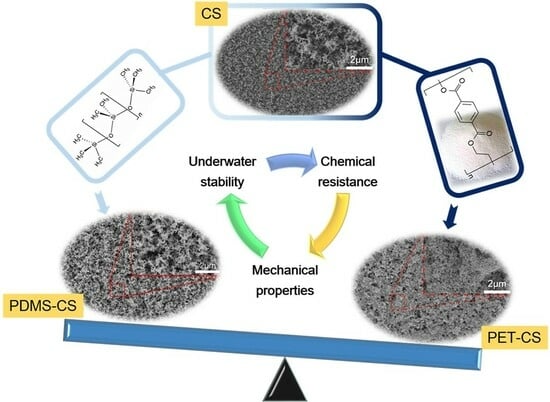
Graphical abstract
Open AccessArticle
Preparation of Adsorbent from Mechanochemical Reaction-Based Waste Seashell with Sodium Oxalate and Its Application in Pb Ion Adsorption
by
Hideo Maruyama
Surfaces 2024, 7(2), 208-224; https://doi.org/10.3390/surfaces7020014 - 30 Mar 2024
Abstract
Waste seashell (scallop shell)-based adsorbent was prepared via mechanochemical reaction with sodium oxalate using ball milling. The oxalate-modified seashell-based adsorbents (OS) were prepared by varying the molar ratio of calcium and oxalate to 0.5, 1, and 2. Sodium oxalate was used as the
[...] Read more.
Waste seashell (scallop shell)-based adsorbent was prepared via mechanochemical reaction with sodium oxalate using ball milling. The oxalate-modified seashell-based adsorbents (OS) were prepared by varying the molar ratio of calcium and oxalate to 0.5, 1, and 2. Sodium oxalate was used as the aqueous solution in ball milling. Lead ion adsorption was conducted with the prepared adsorbent. The adsorption behavior of lead ions was investigated in terms of adsorption kinetics and adsorption equilibrium. The time course of the amount of Pb adsorbed agreed well with Langmuir rate equation. The adsorption equilibrium relationship of OS adsorbent and Pb agreed well with the Langmuir adsorption isotherm. Increasing with the molar ratio, the saturated amount of Pb adsorbed increased slightly from 5.45 × 10−3 to 6.23 × 10−3 mol/g. Under the present experimental conditions, the maximum equilibrium adsorption was 5.93 × 10−3 mol/g, which is greater than that reported in the literature.
Full article
(This article belongs to the Collection Featured Articles for Surfaces)
►▼
Show Figures
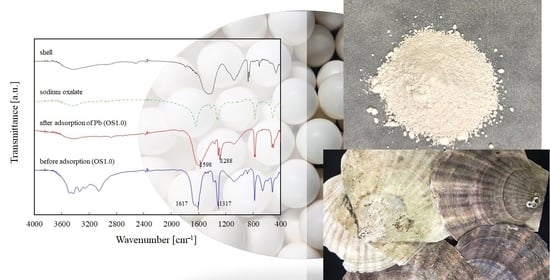
Graphical abstract
Open AccessArticle
Microstructure and Properties of Thin-Film Submicrostructures Obtained by Rapid Thermal Treatment of Nickel Films on Silicon
by
Vasilina Lapitskaya, Ruslan Trukhan, Tatyana Kuznetsova, Jaroslav Solovjov, Sergei Chizhik, Vladimir Pilipenko, Karyna Liutsko, Anastasiya Nasevich and Maksim Douhal
Surfaces 2024, 7(2), 196-207; https://doi.org/10.3390/surfaces7020013 - 27 Mar 2024
Abstract
Nickel films of 40 nm thickness were obtained by means of magnetron sputtering on a single-crystalline silicon substrate. The films were subjected to rapid thermal treatment (RTT) for 7 s until the temperature increased from 200 to 550 °C. By means of the
[...] Read more.
Nickel films of 40 nm thickness were obtained by means of magnetron sputtering on a single-crystalline silicon substrate. The films were subjected to rapid thermal treatment (RTT) for 7 s until the temperature increased from 200 to 550 °C. By means of the X-ray diffraction method, the structural-phase composition of nickel films before and after RTT was explored. The atomic force microscopy method due to direct contact with the surface under study, made it possible to accurately define the microstructure, roughness, specific surface energy and grain size of the nickel films before and after RTT, as well as to establish the relationship of these parameters with the phase composition and electrical properties of the films. Surface specific resistance was measured using the four-probe method. Based on XRD results, formation of Ni2Si and NiSi phases in the film was ascertained after RTT at 300 °C. At RTT 350–550 °C, only the NiSi phase was formed in the film. The microstructure and grain size significantly depend on the phase composition of the films. A correlation has been established between specific surface energy and resistivity with the average grain size after RTT at 350–550 °C, which is associated with the formation and constant restructuring of the crystal structure of the NiSi phase.
Full article
(This article belongs to the Special Issue Surface Modification and Coating to Improve Properties of Various Materials)
►▼
Show Figures
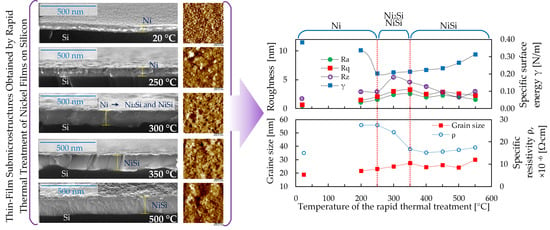
Graphical abstract
Open AccessArticle
Etching and Compositional Ratio Effect on the Surface Properties of Bismuth Telluride Thin Films
by
Jeongho Mun, Sangmin Han, Hee-Seung Yoon, Jisoo Kang, Oliver Jonas, Juyun Park and Yong-Cheol Kang
Surfaces 2024, 7(1), 181-195; https://doi.org/10.3390/surfaces7010012 - 15 Mar 2024
Abstract
Bismuth telluride has garnered considerable attention owing to its versatile properties applicable in thermoelectric and antibacterial domains, as well as its intriguing topological insulating properties. In this work, our group fabricated bismuth telluride thin films with various ratios using radio frequency magnetron sputtering.
[...] Read more.
Bismuth telluride has garnered considerable attention owing to its versatile properties applicable in thermoelectric and antibacterial domains, as well as its intriguing topological insulating properties. In this work, our group fabricated bismuth telluride thin films with various ratios using radio frequency magnetron sputtering. The surface properties of these thin films were thoroughly analyzed by employing a diverse array of analytical techniques, including X-ray photoelectron spectroscopy (XPS), ultraviolet photoelectron spectroscopy (UPS), scanning electron microscopy (SEM), atomic force microscopy (AFM), X-ray diffraction (XRD), four-point probe and contact angle (CA) measurements. Specifically, our XPS findings indicated that Bi is more susceptible to oxidation than Te following Ar+-ion etching. Pure Te thin films exhibited the highest Rq value of 31.2 nm based on AFM and SEM results due to their larger grain sizes. The XRD patterns revealed a peak at 27.75° for thin films with 20% Te, attributed to its rhombohedral structure. Moreover, thin films with 30% Te yielded the highest weighted average work function with a value of 4.95 eV after etching. Additionally, pristine Bi and Te thin films demonstrated the most robust hydrophobic properties compared to intermediate-composition thin films, as determined by CA measurements.
Full article
(This article belongs to the Collection Featured Articles for Surfaces)
►▼
Show Figures
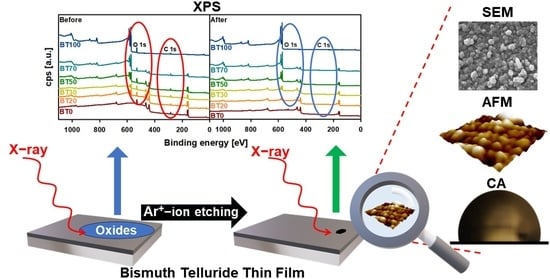
Graphical abstract
Open AccessArticle
Comparison between Electrooxidation of 1-Naphthol and 2-Naphthol in Different Non-Aqueous Solvents and Suppression of Layer Growth of Polymers
by
László Kiss, Péter Szabó and Sándor Kunsági-Máté
Surfaces 2024, 7(1), 164-180; https://doi.org/10.3390/surfaces7010011 - 15 Mar 2024
Abstract
►▼
Show Figures
The two naphthol isomers were investigated in different organic solvents by taking cyclic voltammograms, and fouling took place on a platinum electrode surface, except for dimethyl sulfoxide and dimethyl formamide. Studies in allyl alcohol rarely used in electrochemical investigations pointed to the importance
[...] Read more.
The two naphthol isomers were investigated in different organic solvents by taking cyclic voltammograms, and fouling took place on a platinum electrode surface, except for dimethyl sulfoxide and dimethyl formamide. Studies in allyl alcohol rarely used in electrochemical investigations pointed to the importance of the carbon–carbon double bond as electrode deactivation was remarkably faster compared with its saturated analog solvent. Similarly, the use of the other unsaturated solvent mesityl oxide in the electropolymerization of naphthols resulted in different findings compared with methyl isobutyl ketone. As dimethyl formamide was the best choice concerning the solubility of products, it was successfully tested in electrode renewal after deactivation in an aqueous solution. The increase in dimethyl formamide content led to more and more improved reproducibility of the currents of the outlined aromatic compounds. Naphthol isomers were assessed in the suppression of layer growth originating from the electrooxidation of another monomer phloroglucinol. Its simultaneous electrooxidation with naphthol monomers had a dramatic effect on layer morphology and it was found that instead of a coherent organic layer originating from the homopolymerization of phloroglucinol, the copolymerization with naphthols led to the development of more porous and rougher deposits. The suppressed electropolymerization thus increased sensitivity towards a chosen redox active compound, 4-methoxyphenol.
Full article

Graphical abstract
Open AccessArticle
Performance and Surface Modification of Cast Iron Corrosion Products by a Green Rust Converter (Mimosa tenuiflora Extract)
by
David Enrique Arceo-Gómez, Javier Reyes-Trujeque, Patricia Balderas-Hernández, Andrés Carmona-Hernández, Araceli Espinoza-Vázquez, Ricardo Galván-Martínez and Ricardo Orozco-Cruz
Surfaces 2024, 7(1), 143-163; https://doi.org/10.3390/surfaces7010010 - 13 Mar 2024
Abstract
One of the alternative materials used for conducting conservation treatment of iron artifacts is the rust converter, since it generates barrier properties and more stable oxides. The protective properties and surface modifications from using Mimosa tenuiflora extract as a green rust converter on
[...] Read more.
One of the alternative materials used for conducting conservation treatment of iron artifacts is the rust converter, since it generates barrier properties and more stable oxides. The protective properties and surface modifications from using Mimosa tenuiflora extract as a green rust converter on a gray iron oxide layer were studied. The surface characterization was carried out using a Scanning Electron Microscope coupled to an energy-dispersive X-ray spectrometer (SEM-EDS), along with infrared spectroscopy (IR), Raman spectroscopy, X-ray Diffraction (XRD), and Water Contact Angle (WCA). Electrochemical characterization was performed with an Electrochemical Impedance Spectroscope (EIS) using 3.5 wt.% NaCl as the electrolyte. According to the results of the Raman spectroscopy and XRD, the layer of corrosion products formed after 90 days in the atmosphere was composed of goethite, lepidocrocite, maghemite, hematite, and magnetite. The surface of the corrosion products was transformed with the rust converter into an amorphous and microcracked layer. By IR, the Fe-O and C-O-Fe bonds associated with the iron chelate were found with absorption bands at 1540 and 1567 cm−1, respectively. By XRD, a modification of the magnetite crystallinity was observed. Finally, the Water Contact Angle and the protective capacity of the corrosion products were improved by the presence of the rust converter.
Full article
(This article belongs to the Special Issue Surface Treatments to Improve the Corrosion Resistance of Metals)
►▼
Show Figures
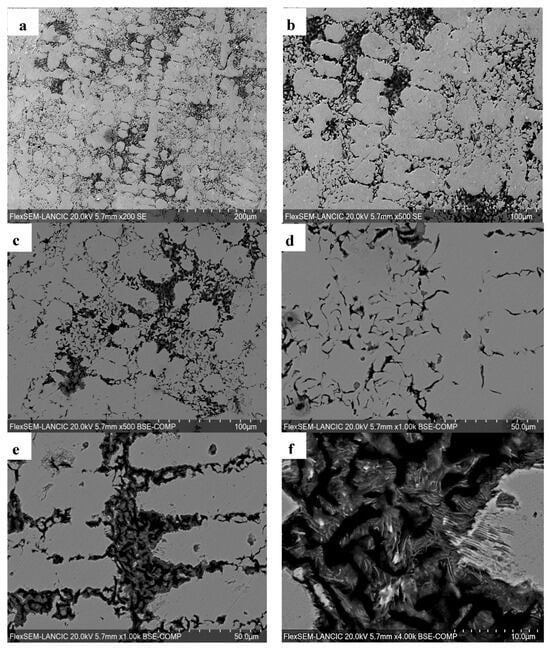
Figure 1
Open AccessReview
The Use of Magnetic Porous Carbon Nanocomposites for the Elimination of Organic Pollutants from Wastewater
by
Bendi Anjaneyulu, Ravi Rana, Versha, Mozhgan Afshari and Sónia A. C. Carabineiro
Surfaces 2024, 7(1), 120-142; https://doi.org/10.3390/surfaces7010009 - 21 Feb 2024
Abstract
One of the most significant challenges the world is currently facing is wastewater treatment. A substantial volume of effluents from diverse sources releases numerous pollutants into the water. Among these contaminants, organic pollutants are particularly concerning due to the associated risk of being
[...] Read more.
One of the most significant challenges the world is currently facing is wastewater treatment. A substantial volume of effluents from diverse sources releases numerous pollutants into the water. Among these contaminants, organic pollutants are particularly concerning due to the associated risk of being released into the environment, garnering significant attention. Rapid advancements in agriculture and industry on a global scale generate vast volumes of hazardous organic compounds, which eventually find their way into natural systems. Recently, the release of industrial wastewater has been increasing, due to the progress of numerous businesses. This poses a danger to humans and the environment, leading to environmental contamination. The application of carbon nanocomposites in applied nanotechnology has recently expanded due to their large surface area, substantial pore volume, low preparation cost, and environmental resilience. Expanding the use of nanomaterials in water treatment is essential, as magnetic carbon nanocomposites consistently demonstrate an efficient elimination of pollutants from water solutions. In the current study, we have highlighted the application of magnetic porous carbon nanocomposites in removing organic pollutants from wastewater.
Full article
(This article belongs to the Special Issue Recent Advances on Catalytic Surfaces and Interfaces)
►▼
Show Figures
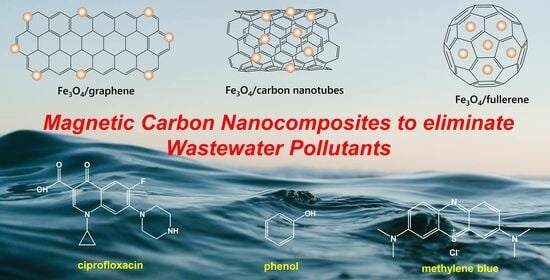
Graphical abstract
Open AccessArticle
Synthesis of WS2 Ultrathin Films by Magnetron Sputtering Followed by Sulfurization in a Confined Space
by
Florinel Sava, Iosif-Daniel Simandan, Angel-Theodor Buruiana, Amelia Elena Bocirnea, Outman El Khouja, Teddy Tite, Mohamed Yasssine Zaki, Claudia Mihai and Alin Velea
Surfaces 2024, 7(1), 108-119; https://doi.org/10.3390/surfaces7010008 - 11 Feb 2024
Abstract
In the quest for advanced materials suitable for next-generation electronic and optoelectronic applications, tungsten disulfide (WS2) ultrathin films have emerged as promising candidates due to their unique properties. However, obtaining WS2 directly on the desired substrate, eliminating the need for
[...] Read more.
In the quest for advanced materials suitable for next-generation electronic and optoelectronic applications, tungsten disulfide (WS2) ultrathin films have emerged as promising candidates due to their unique properties. However, obtaining WS2 directly on the desired substrate, eliminating the need for transfer, which produces additional defects, poses many challenges. This paper aims to explore the synthesis of WS2 ultrathin films via physical vapor deposition (PVD) followed by sulfurization in a confined space, addressing the challenge of film formation for practical applications. Precursor layers of tungsten and WS2 were deposited by RF magnetron sputtering. Subsequent sulfurization treatments were conducted in a small, closed, graphite box to produce WS2 films. The physical and chemical properties of these precursor and sulfurized layers were thoroughly characterized using techniques such as X-ray reflectometry (XRR), X-ray diffraction (XRD), Raman spectroscopy, scanning electron microscopy (SEM), and X-ray photoelectron spectroscopy (XPS). The findings reveal notable distinctions in film thickness, structural orientation, and chemical composition, attributable to the different precursor used. Particularly, the sulfurized layers from the tungsten precursor exhibited a preferred orientation of WS2 crystallites with their (00L) planes parallel to the substrate surface, along with a deviation from parallelism in a small angular range. This study highlights the necessity of precise control over deposition and sulfurization parameters to tailor the properties of WS2 films for specific technological applications.
Full article
(This article belongs to the Collection Featured Articles for Surfaces)
►▼
Show Figures
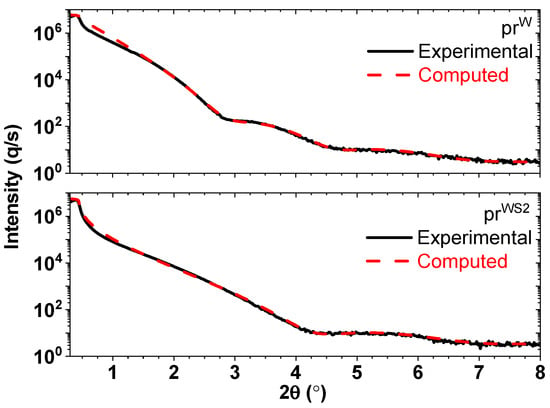
Figure 1
Open AccessArticle
Impact of Corrosion in Simulated Body Fluid on Fatigue Characteristics of 3D-Printed Polylactic Acid-Coated AM60 Magnesium Alloys
by
Seyed Ali Ashraf Talesh and Mohammad Azadi
Surfaces 2024, 7(1), 88-107; https://doi.org/10.3390/surfaces7010007 - 05 Feb 2024
Abstract
►▼
Show Figures
In this research, the pure fatigue behaviors of AM60 magnesium alloy with polylactic acid (PLA) coating (PF-AM60-PLA) and the corrosion fatigue behaviors of magnesium alloy with PLA coating (CF-AM60-PLA) were evaluated. Polymer coating was made by fused deposition modeling (FDM) with a 3D
[...] Read more.
In this research, the pure fatigue behaviors of AM60 magnesium alloy with polylactic acid (PLA) coating (PF-AM60-PLA) and the corrosion fatigue behaviors of magnesium alloy with PLA coating (CF-AM60-PLA) were evaluated. Polymer coating was made by fused deposition modeling (FDM) with a 3D printer and attached to standard fatigue test specimens with glue. Then, after 27 days of immersion in the simulated body fluid (SBF), the high-cycle bending fatigue test was performed on samples. Due to corrosion, the weight of the specimens was reduced by an average of 35%. The corrosion rate decreased in the first 7 days and then increased. PF samples with a coating had an average 49% increase in fatigue lifetime. Regarding the CF samples, despite the use of a 10-times stronger solution, the fatigue lifetime of these samples decreased by only 35%. The field-emission scanning electron microscopy (FESEM) results also showed cleavage plates and striations. In addition, the separation of the glue from the coating and Mg was observed. Corrosion products, in addition to microcracks and holes, were seen on the fracture surface of CF specimens, which caused the stress concentration and the crack initiation. Holes caused by the release of gases were also observed in polymer coatings, which were fabricated by 3D printing.
Full article

Figure 1
Open AccessArticle
Substrate Doping and Defect Influence on P-Rich InP(001):H Surface Properties
by
Rachele Sciotto, Isaac Azahel Ruiz Alvarado and Wolf Gero Schmidt
Surfaces 2024, 7(1), 79-87; https://doi.org/10.3390/surfaces7010006 - 12 Jan 2024
Cited by 2
Abstract
Density-functional theory calculations on P-rich InP(001):H surfaces are presented. Depending on temperature, pressure and substrate doping, hydrogen desorption or adsorption will occur and influence the surface electronic properties. For p-doped samples, the charge transition levels of the P dangling bond defects resulting
[...] Read more.
Density-functional theory calculations on P-rich InP(001):H surfaces are presented. Depending on temperature, pressure and substrate doping, hydrogen desorption or adsorption will occur and influence the surface electronic properties. For p-doped samples, the charge transition levels of the P dangling bond defects resulting from H desorption will lead to Fermi level pinning in the lower half of the band gap. This explains recent experimental data. For n-doped substrates, H-deficient surfaces are the ground-state structure. This will lead to Fermi level pinning below the bulk conduction band minimum. Surface defects resulting from the adsorption of additional hydrogen can be expected as well, but affect the surface electronic properties less than H desorption.
Full article
(This article belongs to the Collection Featured Articles for Surfaces)
►▼
Show Figures
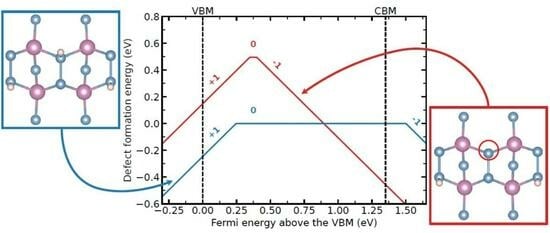
Graphical abstract
Open AccessReview
Reviewing Perovskite Oxide-Based Materials for the Effective Treatment of Antibiotic-Polluted Environments: Challenges, Trends, and New Insights
by
Afonso Henrique da Silva Júnior, Carlos Rafael Silva de Oliveira, Tarcisio Wolff Leal, Leandro Pellenz, Selene Maria de Arruda Guelli Ulson de Souza, Antônio Augusto Ulson de Souza, António Benjamim Mapossa, Robert Kimutai Tewo, Hilary Limo Rutto, Luciano da Silva and Adriano da Silva
Surfaces 2024, 7(1), 54-78; https://doi.org/10.3390/surfaces7010005 - 11 Jan 2024
Cited by 1
Abstract
►▼
Show Figures
Society confronts the pressing environmental challenges posed by the pervasive presence of toxic pollutants in aquatic ecosystems. The repercussions of contaminant release extend far and wide, endangering marine life and human well-being. While various techniques such as bioremediation, filtration, and adsorption have been
[...] Read more.
Society confronts the pressing environmental challenges posed by the pervasive presence of toxic pollutants in aquatic ecosystems. The repercussions of contaminant release extend far and wide, endangering marine life and human well-being. While various techniques such as bioremediation, filtration, and adsorption have been employed for wastewater treatment, they grapple with cost effectiveness and overall efficiency issues. Advanced oxidative processes, including photocatalysis and Fenton, have emerged as viable solutions in response to the emerging contaminants. However, the efficacy of photocatalysis largely hinges on the choice of catalyst. Their distinctive attributes, such as chemical defects and exceptional stability, make perovskite oxides a promising catalyst. These materials can be synthesized through diverse methods, rendering them versatile and adaptable for widespread applications. Ongoing research endeavors are diligently focused on enhancing the performance of perovskite oxides, optimizing their integration into catalytic processes, and exploring innovative approaches for material immobilization. This comprehensive review seeks to elucidate the most pivotal advances in perovskite oxides and their composites within the wastewater treatment domain. Additionally, it sheds light on burgeoning research trends and multifaceted challenges confronting this field, which present insights into techniques for treating the antibiotic-contaminated environment, delving into innovative strategies, green technologies, challenges, and emerging trends.
Full article
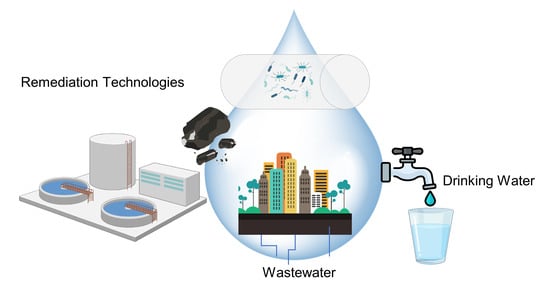
Graphical abstract
Open AccessArticle
Ignition of Carbon Black during Nanosecond Diffuse and Spark Discharges in Air at Atmospheric Pressure
by
Mikhail Lomaev, Victor Tarasenko, Dmitry Sorokin and Dmitry Beloplotov
Surfaces 2024, 7(1), 44-53; https://doi.org/10.3390/surfaces7010004 - 10 Jan 2024
Abstract
►▼
Show Figures
Many scientific teams are currently studying the effects of plasma generated by nanosecond diffuse discharges on the surfaces of various materials in order to modify their properties. To achieve this, uniform plasma is required to act on the target being treated, which is
[...] Read more.
Many scientific teams are currently studying the effects of plasma generated by nanosecond diffuse discharges on the surfaces of various materials in order to modify their properties. To achieve this, uniform plasma is required to act on the target being treated, which is often an electrode in a discharge system. Previously, the surface treatment uniformity of flat electrodes during a nanosecond discharge in a point-to-plane gap was studied by applying a carbon black layer, and a discharge mode was identified in which there was no erosion on the treated electrode. In this study, it was established that during a nanosecond discharge in air at atmospheric pressure in a non-uniform electric field, carbon black deposited on the surface of a flat anode can ignite. The conditions and dynamics of carbon black ignition during the nanosecond discharge were determined. It was observed that the carbon black is ignited on the surface and continues to combust in the gap in the form of flame plumes for tens of milliseconds. It was also found that the combustion of carbon black can occur in both diffuse and spark discharges.
Full article
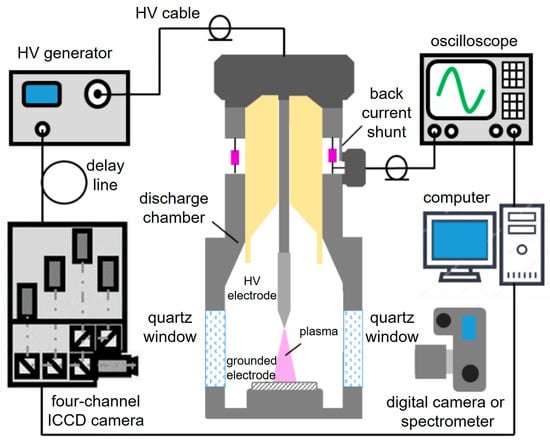
Figure 1
Open AccessArticle
The Effect of Mn Doping and Ti3+ Defects at TiO2 Surfaces in NO and SO2 Gas Capture Investigated Using Near-Ambient Pressure X-ray Photoelectron Spectroscopy
by
Jack Chun-Ren Ke, Andrew Guy Thomas, Joseph Peake and Robert Sayer
Surfaces 2024, 7(1), 26-43; https://doi.org/10.3390/surfaces7010003 - 05 Jan 2024
Abstract
►▼
Show Figures
The removal of air pollutants is an important research topic in order to improve the environment. In addition, many common pollutants can affect human health to varying degrees. In this work, we investigate NO and SO2 conversion by reaction with a commonly
[...] Read more.
The removal of air pollutants is an important research topic in order to improve the environment. In addition, many common pollutants can affect human health to varying degrees. In this work, we investigate NO and SO2 conversion by reaction with a commonly used metal oxide catalyst, TiO2. Rutile TiO2(110) single crystals and industrial powder samples used in sunscreen are studied using near-ambient pressure X-ray photoelectron spectroscopy (NAP-XPS) as a main tool. This allows in situ monitoring of the gas conversion process. We find Ti3+ defects (oxygen vacancies) or Mn oxides/cations (MnO) at the TiO2 surfaces can improve the conversion of NO and SO2 to surface-bound species. MnO and Ti3+ defects at the surface of rutile TiO2(110) exhibit a synergistic effect on the conversion of NO and SO2 that is significantly improved by nearly an order of magnitude. The by-products are mainly in the form of NO3−, SO32−, and SO42−. We find the main oxidation products formed on the single crystals are subtly different from those on the industrial powder samples. For TiO2 nanopowders (undoped and Mndoped), the presence of Mn also shows improvement in toxic gas adsorption capacity. Overall, it is believed that the outcome obtained from NAP-XPS in this research provides useful insights for the future use of TiO2 in pollutant gas capture.
Full article

Graphical abstract
Open AccessArticle
Effective Surface Structure Changes and Characteristics of Activated Carbon with the Simple Introduction of Oxygen Functional Groups by Using Radiation Energy
by
So Yeong Yang, Byong Chol Bai and Yong Ryeol Kim
Surfaces 2024, 7(1), 12-25; https://doi.org/10.3390/surfaces7010002 - 22 Dec 2023
Cited by 1
Abstract
►▼
Show Figures
In recent years, research has aimed to enhance the environmental friendliness of activated carbon by modifying its surface properties to effectively capture specific harmful gases. This study’s primary goal is to swiftly introduce oxygen functional groups to activated carbon surfaces using microwave and
[...] Read more.
In recent years, research has aimed to enhance the environmental friendliness of activated carbon by modifying its surface properties to effectively capture specific harmful gases. This study’s primary goal is to swiftly introduce oxygen functional groups to activated carbon surfaces using microwave and plasma techniques and evaluate their characteristics. In the microwave method, we varied nitric acid concentrations and treatment durations for surface modification. Additionally, plasma treatment was used to introduce oxygen functional groups for comparative purposes. Surface characteristics were assessed through SEM, BET, XPS, and FT-IR analyses. The results indicate that in the microwave method, the quantity of oxygen functional groups increased with longer reaction times. Specifically, the sample treated for 20 min with 8 moles of nitric acid displayed an oxygen content of 14.11 at%, and higher nitric acid concentrations led to a reduced specific surface area. In the case of plasma treatment, higher oxygen flow rates resulted in an O1s content of 17.1 at%, and an increase in oxygen flow rate introduced more oxygen functional groups but decreased the specific surface area.
Full article

Figure 1
Open AccessArticle
Surface Functionalization of TiO2 Nanotubes Modified with a Thin Film of BiFeO3
by
Shikhgasan Ramazanov, Farid Orudzhev and Gaji Gajiev
Surfaces 2024, 7(1), 1-11; https://doi.org/10.3390/surfaces7010001 - 19 Dec 2023
Abstract
►▼
Show Figures
The atomic layer deposition method allows for the production of a thin film with a high aspect ratio on the uneven surface of titanium dioxide nanotubes TiO2(Nt). A modified BiFeO3/TiO2(Nt)/Ti (BFOT) structure with controllable electrical characteristics was
[...] Read more.
The atomic layer deposition method allows for the production of a thin film with a high aspect ratio on the uneven surface of titanium dioxide nanotubes TiO2(Nt). A modified BiFeO3/TiO2(Nt)/Ti (BFOT) structure with controllable electrical characteristics was obtained. BFOT possesses both ferroelectric and semiconductor properties with nonlinear conductivity dependent on the magnitude and duration of the voltage supply. Analysis of the temperature dependence of charge variation showed leakage currents in the BFOT structure due to the capture and release of charge carriers from defect levels. Surface modification of nanotubes with the multiferroic BiFeO3 allows for the creation of semiconductors with adaptive functional properties.
Full article

Figure 1
Open AccessEditorial
Impact of Surface Science in Current Science and Technology: Some Basic Considerations
by
Gaetano Granozzi
Surfaces 2023, 6(4), 533-535; https://doi.org/10.3390/surfaces6040035 - 15 Dec 2023
Abstract
►▼
Show Figures
More than half a century has passed since the establishment of surface science as a specific discipline [...]
Full article
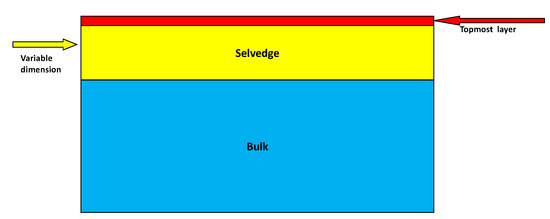
Figure 1
Open AccessArticle
The Corrosion Inhibition Performance of Eco-Friendly bis-Schiff Bases on Carbon Steel in a Hydrochloric Solution
by
Arthur Valbon, Neubi F. Xavier, Jr., Mariana F. L. P. Carlos, Glauco F. Bauerfeldt, Francisco W. Q. Almeida-Neto, Pedro de Lima-Neto, Marcelo A. Neves, Cláudio E. Rodrigues-Santos and Aurea Echevarria
Surfaces 2023, 6(4), 509-532; https://doi.org/10.3390/surfaces6040034 - 06 Dec 2023
Cited by 1
Abstract
Corrosion inhibitors are widely used as an important tool for the prevention and remediation of different materials exposed to corrosive industrial processes. Corrosion inhibitors are usually added to acid pickling solutions to reduce the deterioration of metallic materials and particularly, corrosion due to
[...] Read more.
Corrosion inhibitors are widely used as an important tool for the prevention and remediation of different materials exposed to corrosive industrial processes. Corrosion inhibitors are usually added to acid pickling solutions to reduce the deterioration of metallic materials and particularly, corrosion due to hydrochloric acid. In this work, three bis-Schiff bases (BS2, BS4 and BS8) were synthesized and characterized using spectroscopic methods, and their anti-corrosive effects on AISI 1020 carbon steel in a hydrochloric acid solution were studied using gravimetric and electrochemical techniques and quantum chemical methods. The results showed that all substances act as potential corrosion inhibitors as BS8 exhibited the highest efficiency (98%) of all methods. The compounds adsorbed on the metal surface were as per the El-Awady adsorption isotherm. Morphological aspects of the metal were observed upon applying SEM, and the theoretical results acquired from the quantum chemical calculation for molecular properties and the Fe(110) surface adsorption proved to be compatible with the experimental results.
Full article
(This article belongs to the Special Issue Corrosion and Corrosion Resistant Coatings)
►▼
Show Figures
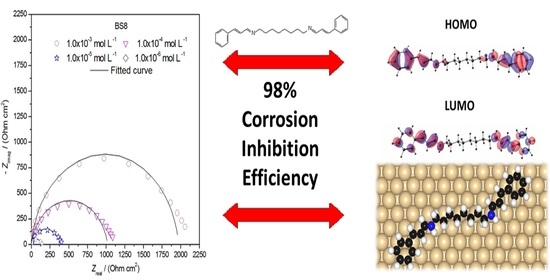
Graphical abstract
Highly Accessed Articles
Latest Books
E-Mail Alert
News
Topics

Conferences
Special Issues
Special Issue in
Surfaces
Surface Treatments to Improve the Corrosion Resistance of Metals
Guest Editor: Roberto GiovanardiDeadline: 30 April 2024
Special Issue in
Surfaces
Surface Modification and Coating to Improve Properties of Various Materials
Guest Editors: Jaeho Kim, Susumu YonezawaDeadline: 31 May 2024
Special Issue in
Surfaces
Recent Advances on Catalytic Surfaces and Interfaces
Guest Editors: Michalis Konsolakis, Irene GrootDeadline: 31 July 2024
Special Issue in
Surfaces
Applications of Nanotechnology in Diagnosis and Therapy
Guest Editors: Venkatesan Perumal, Shanmuga Sundari IDeadline: 31 August 2024






